Railroad vine grows on sand dunes in many tropical and subtropical regions. Here in the states it can be found on beaches from Georgia to Texas. We recently had the chance to snap a few photos of railroad vines when we spent some time on the Atlantic coast of Florida. The views looking out over the ocean are fantastic, but the railroad vines lavender flowers and bright green foliage are a pretty impressive sight to see spreading out on the sand.
They can cover up to 100 feet; however the ones we saw were only about 15 to 25 feet long. When I started researching this plant at Floridata, I discovered that the flowers on this perennial only last one day. But they are repeat bloomers all year long.
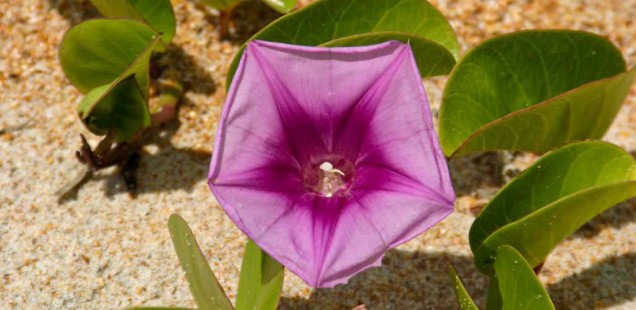
Fast growing and drought tolerant, they are often found growing with…
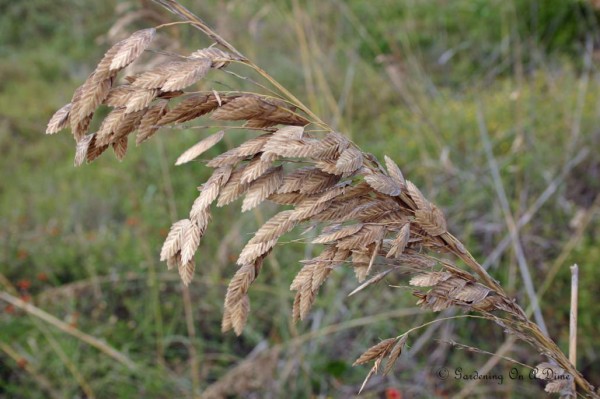
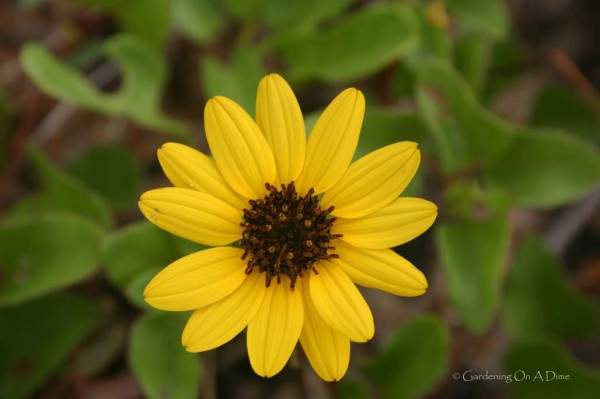
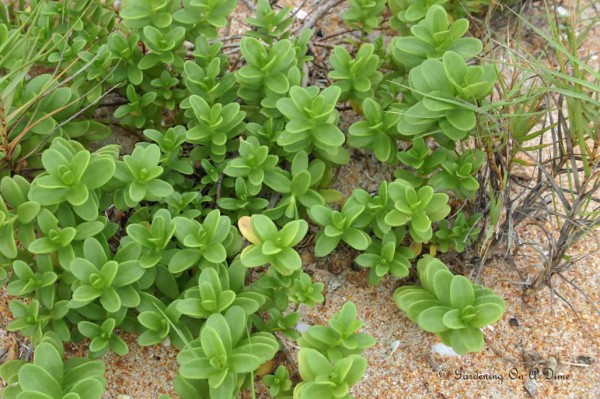
on the dunes, just above the high tide line.

The railroad vine (ipomoea pes-caprae) is important to dune erosion control. Roots up to two inches in diameter and ten feet long grow from the nodes of the vine.
During our visit, we saw several signs directing people to use the beach crossovers. It was easy to see the damage caused by people climbing the dunes looking for a short cut back to higher ground.
Beaches are fragile environments. One would not think so since the railroad vine, sea oats and the others can tolerate the extreme heat, salt, wind and dry conditions. It’s the impact that humans have when visiting the beach that threatens the dune eco-system.
If you are fortunate to visit any of the beaches from Georgia to Texas, be sure to look for railroad vines. They are easy to spot. Just look for their bright pink to purple flowers stretching out over the sand.
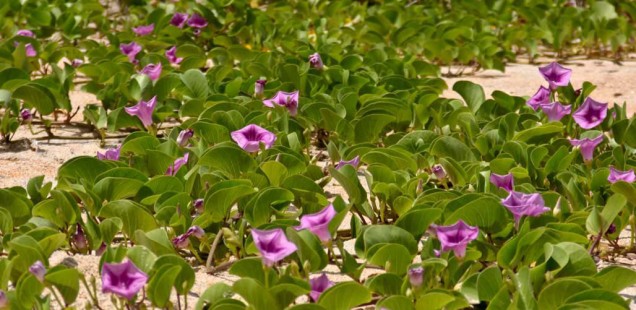
Keep in mind that Ipomoea pes-caprae helps keep that pretty beach you are visiting alive and healthy. To remind visitors at the park of the importance these plants, there was a poster displayed with a quote by Mary King that explained things quite simply.
“Sand dunes are born when wind and waves from the ocean (or gulf) deposit organic matter onto the sand. The matter embeds in the sand and begins to grow. During the summer, more and more sand is trapped by the propagating plant life. Low-growing tough plants with extensive root systems (called rhizomes) develop, preventing small dunes from breaking down during high tide. As the growing process continues, larger plants trap more sand. More sand grows larger plants. Year after year the cycle continues.”
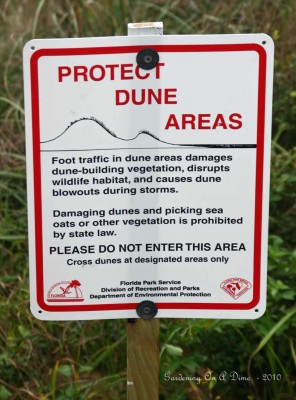
Respect the dunes and the dunes will reward us all with wonderful plants to enjoy.
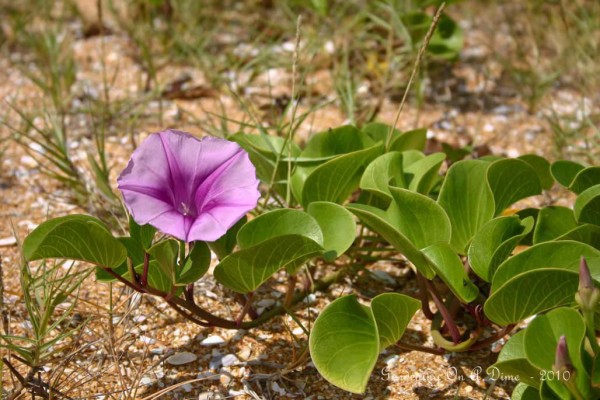
Happy Gardening,
Dave and Trish
To read the complete article about beach erosion from Mary King, follow this link at Suite101.

I don’t suppose railroad vine would grow here in Colorado at an elevation of 6500 ft? Colorado is a very frustrating place to garden in!
Summers…? Maybe. But winters…………definitely not.
However, I’ve been to Colorado and Mother Nature has done quite a fine job of providing you with some wonderfully scenic “natural” gardens! There must be a flowering vine that would thrive in your area and offer you just as much enjoyment as the Railroad Vines do for us in Florida. Gardeners are persistent.
Thanks for commenting and good luck!
Anyone know of a cold weather, higher altitude vine?
I love this vine.
Im in Orlando and I have it all over my landscape to replace useing mulch.
It grows like crazy and easy to trim and push the trim into the soil to start more. No special tools needed. The trim piece will start to grow in days
Rick, It is a pretty cool vine. How does it take the cold winters that we have been experiencing the last few years?
What a wonderful vine that is. Love the color of the flowers.
Thanks for visiting my blog and your kind comment.
FlowerLady